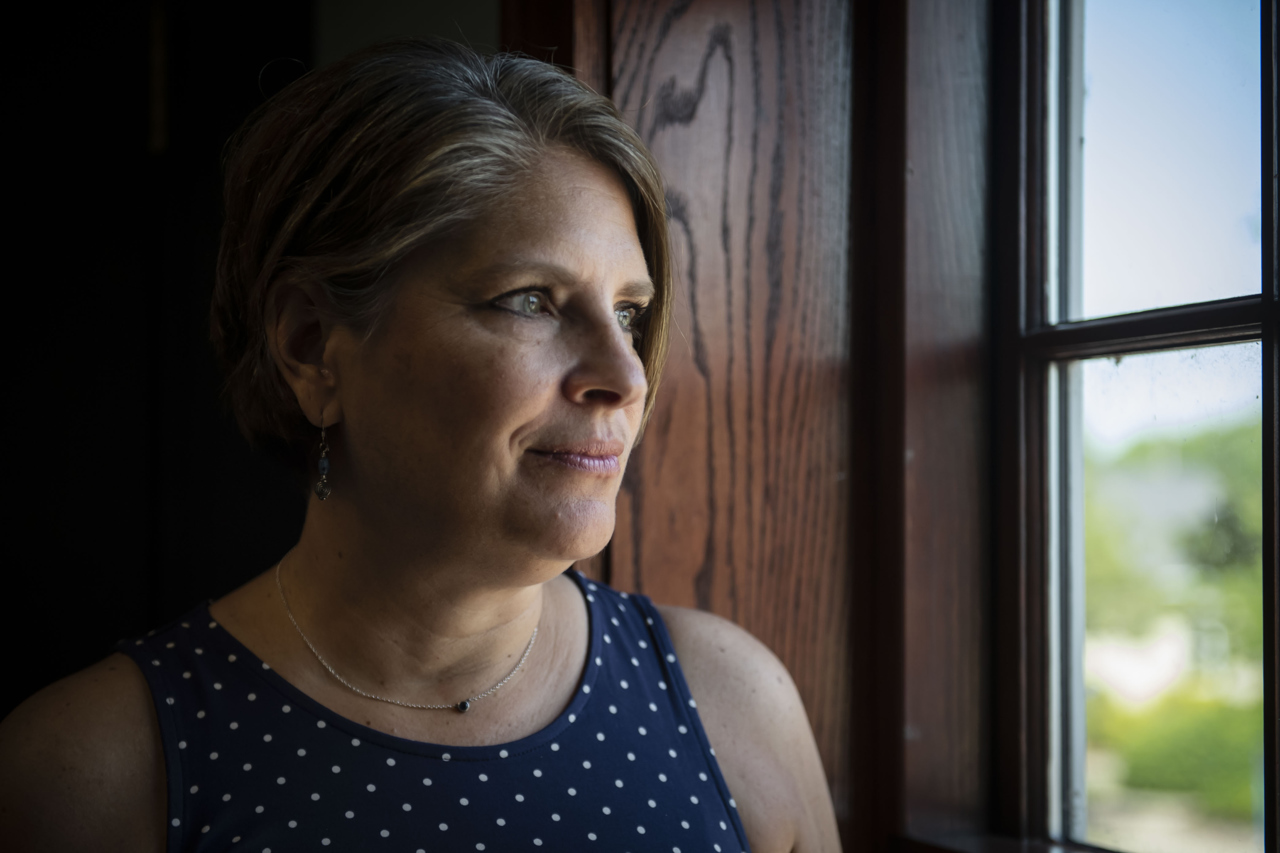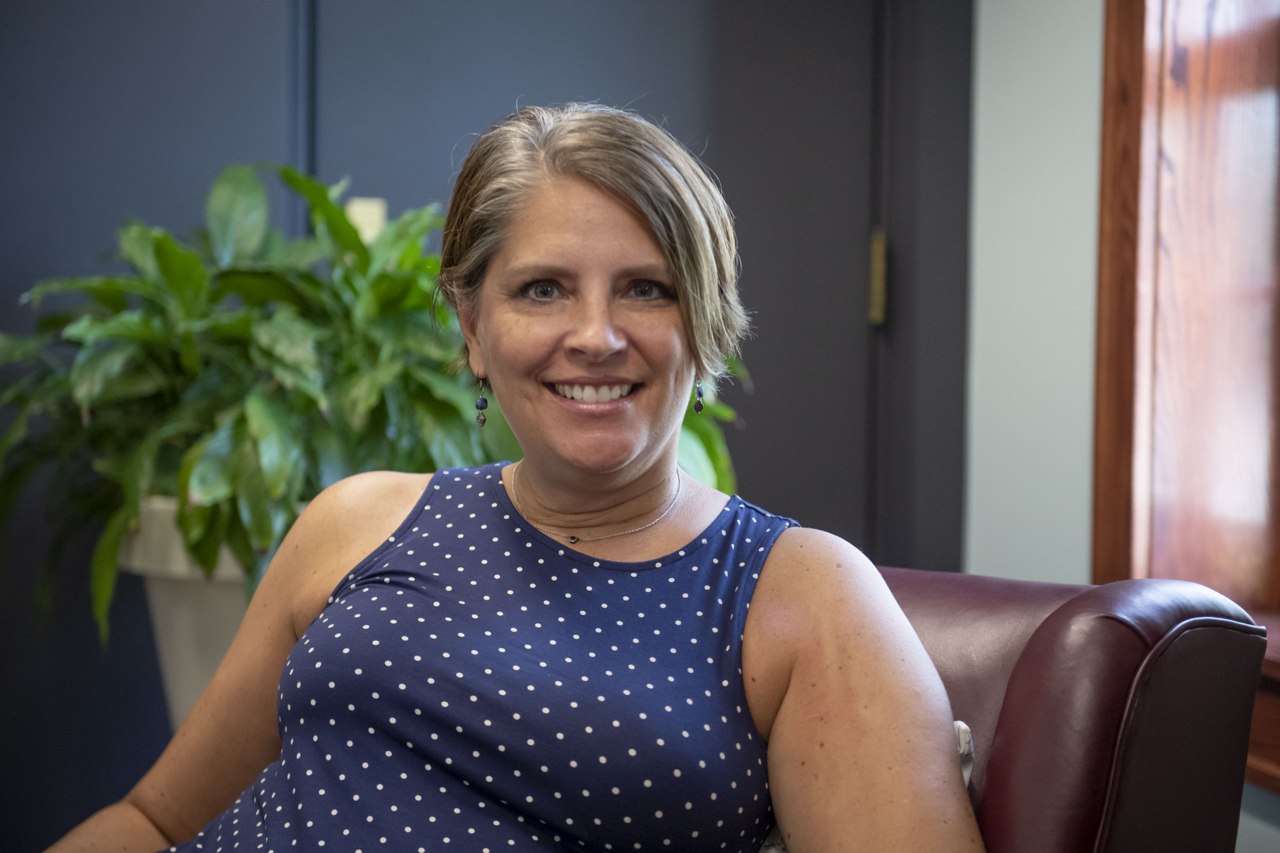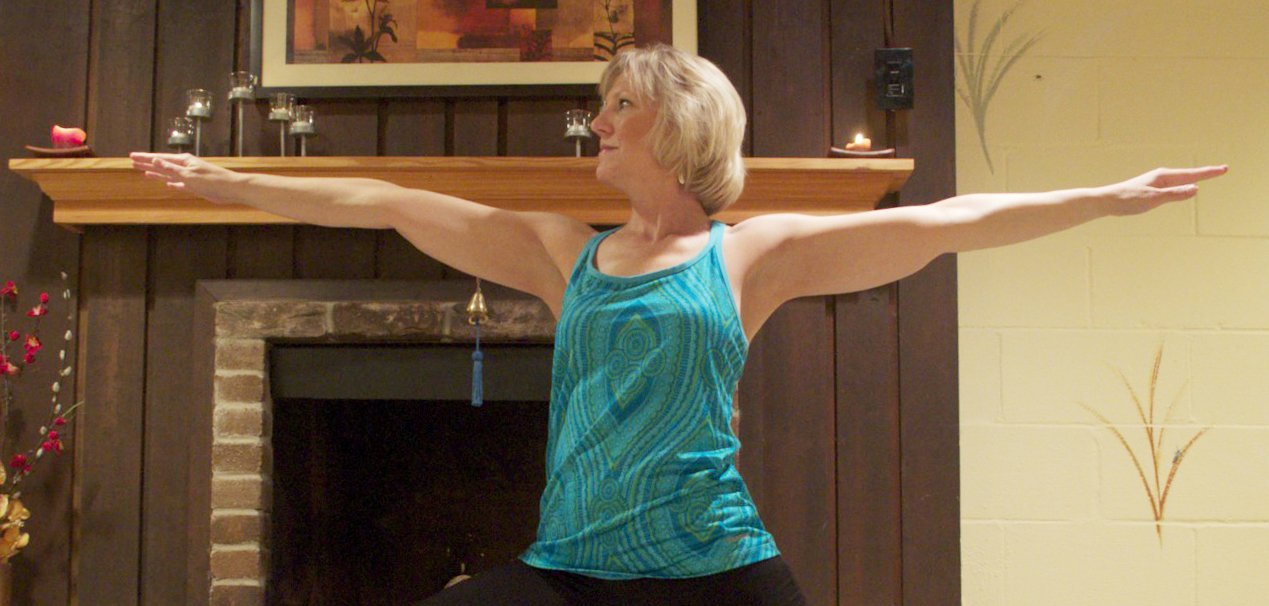Every beginning has an end.
But as with anything in life, endings are often hard. Especially when it’s a transition into menopause.
Chris Burns knows. She’s been transitioning for more than a decade.
“It’s been a long 10 years,” said Burns, manager of the Village of Spring Lake, a quaint Michigan lakeshore community. “Long before I moved to Spring Lake, I started that whole menopause journey. Night sweats is how it started.”
Not just a little perspiration, but sleep-interrupting almost swimming-in-sweat sensations.
“It happened continually, all night,” Burns said. “My poor husband (Bill). I feel bad for him throughout this whole thing. He kind of suffers right alongside me.”
She didn’t say much the first few years.
Being a confident kind of gal, she thought the sweats would subside. But after moving to Spring Lake in 2012, symptoms continued.
“There were a couple of years in there I couldn’t stand myself,” Burns said. “It’s a horrible, horrible journey. This is far worse than being a teenager. I never had acne as a teenager. This is stupid. I’m 48 years old and I’ve got acne.”
Burns said her sleep grew so disrupted it felt like she had a newborn again.
“You remember when your sleep pattern was so screwed up when you have an infant?” Burns said. “My sleep was interrupted all night long.
“It affects how you function during the day, your memory and your mood,” she said. “I was on an emotional roller coaster, a train wreck for three to four years. My hormones were completely out of whack.”
Daylight brought little relief.
Hot flashes flared.
“I was traveling one time and I’m too cheap to pay for assigned seats,” she said. “I was wedged in an airplane between two strangers. I was like, ‘Can I have your air vent? Can I have your air vent?’ I was down to practically my underwear and still burning up.”
A source of help
One day, at one of the many municipal and regional meetings she attends, she met a woman who shared similar symptoms.
“It was sheer dumb luck,” Burns said.
The woman mentioned a book about menopause, so Burns picked up a copy and read it.
“I thought, ‘This all makes sense,’” she said.
Burns soon called the Spectrum Health Midlife, Menopause & Sexual Health clinic and connected with nurse practitioner Natasha Peoples, NCMP.
“I went to see her and loved her,” Burns said. “She talks about uncomfortable things, right down to your sex life. She gives you all the time in the world and makes you feel so comfortable.”
First steps: adjusting diet and exercise to help manage daytime hot flashes and night sweats.
It worked, for a while.
“My quality of life improved so much with various things we tried,” Burns said.
But menopause wouldn’t go down easy. Like a hormonal horror monster, it reared and seared, insistent on controlling Burns’ emotions and disrupting her sleep with simmering sweat.
Peoples told Burns many patients experience relief with an IUD birth control device, even if they are past child-bearing years.
“I didn’t need to think about it,” Burns said. “Let’s do this. Five minutes later, I walked out of the office.”
For a time, it helped. She felt more balanced. More in control of her emotions.
But without explanation, the effects diminished.
Her symptoms returned.
“I was in tears constantly and all I wanted to do is sleep,” Burns said. “But I couldn’t sleep, because I’d have night sweats.
“So I’d nap on my lunch hour and after work. I had to pay someone to clean my house because I just didn’t have the energy at the end of the day. It was all I could do to get the laundry done.”
A solution
Burns scheduled another appointment with Peoples, at her Lake Michigan Drive Spectrum Health Medical Group office.
“Hi, how are you?” Peoples asked as she entered the exam room.
“I’m a hot mess right now,” Burns said. “I have packed on 15 pounds since Christmas. I’m thinking something is off with my hormones. I didn’t have a hot flash for the longest time, but they started back up. My husband started categorizing them like tornadoes—they go from an F1 to an F5.”
Peoples said if Burns had entered “full-blown menopause,” it would explain the weight gain.
“There are a couple of hormone levels we could check to see,” Peoples said.
She also checked testosterone level.
“If that’s a little out-of-whack, it would give us an answer on how to help,” Peoples said. “We also always check the thyroid when there are weight changes, sleep changes or mood changes. Do you have days where you have zero hot flashes?”
Burns quickly responded. “No.”
“How many during the night?” Peoples asked.
“Probably three, at least,” Burns said. “Alcohol is a trigger. If I have two sips of wine, bam, a hot flash. I know I feel better when I stay away from starches and carbs. I’m pretty good about no bread, potatoes, pasta. I started going to yoga twice a week.”
Peoples empathized.
“And it’s frustrating you’re not seeing the benefit,” she said. “How much water are you drinking? How many hours of sleep are you getting?”
Burns said she tries to drink 80 ounces a day. She’s in bed for eight hours, but sleeps only about half that time.
“I often think sleep is one of those hidden factors in weight loss,” Peoples said. “You need healthy sleep for healthy metabolism. No screen time, no caffeine, so the brain is ready for sleep. Whatever we can do to make that better I think is going to be worth it.”
Peoples had another “better sleep” trick in her kit.
“If you take two deep breaths before you go to bed at night, it seems to help,” she said. “It won’t take away all the hot flashes, but it can take away some of them. And if you’re getting stressed during the day, take five deep breaths.”
Peoples said lab results will help her target how best to treat Burns.
“I’ve looked at your individual risk for hormone therapy,” she said. “You’re low-risk for estrogen. It’s FDA-approved for moderate to severe hot flashes and night sweats—and you have that. If it’s keeping you awake at night and affecting your ability to lose weight, then it’s definitely worth treating. What are your thoughts?”
Burns didn’t hesitate.
“If it improves quality of life, I’m all for it,” she said.
Peoples told Burns she’s a step ahead—she already has an IUD in place, which can be used as the progesterone piece of hormonal therapy.
“If we treat with estrogen, we have to have progesterone to treat the lining of the uterus,” Peoples said. “When you absorb estrogen through your skin, it’s safest. You’ve already got the IUD to help keep the uterus safe.”
Flash forward a month.
Burns wears a postage stamp-sized patch on her torso that she replaces every Sunday and Thursday.
The results are chilling, in a good way—no more hot flashes or night sweats.
“I feel like the fog has been lifted because I’m sleeping so much better,” Burns said. “My blood work came back and indicated that I am no longer peri-menopausal, but rather full-on menopausal.
“This hormone therapy is the cure for the side effects of menopause,” she said. “It’s been just what I needed—an overall better mindset.”






 /a>
/a>
 /a>
/a>
 /a>
/a>
Good
The clinic and Julie Ondersma, CNP have been ‘life changing”…( no pun intended). It was so nice to have someone sit down and Listen…. and then be able to offer some options!,
As Chris said, “it is like having a fog lifted” My only regret is that I did not make an appointment sooner. I think most women, like myself have been told that “you just have to struggle through it” unfortunately the struggle is for 15 plus years… I am so thankful for this clinic and Julie!